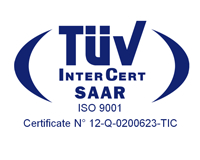ION GNSS+ is the world’s largest technical meeting and showcase of GNSS technology, products and services. This year’s conference held at Denver (USA) on 19-23 September has reviewed and selected the Paper ERTMS train control and Connected Car applications: technical synergies and opportunities submitted by Radiolabs in collaboration with Sogei and University of Stanford (Session D3: GNSS Augmentation and Robustness for Autonomous Navigation | ION GNSS+ 2022).
The paper deals with the GNSS technologies for the Rail and Road transportation systems which are evolving to progressively introduce automation with the ultimate goal of autonomous driving. Both trains and cars need high accuracy-integrity GNSS based positioning appliances to improve efficiency, capacity and also to reducing CO2 and power consumption which are the new priorities for a sustainable mobility. These prospects open new challenges for managing GNSS as standard means for vehicle’s positioning, but at the same time are offering unprecedented opportunities given the dimension of the potential market and mutual benefits.
The Augmentation network presented at ION conference is part of the roadmap to realize standard GNSS-based products and a source of stability for long-term evolutions of ERTMS and Connected car applications to ensure competitiveness. Among the others, priority is set on the compliance with the stringent safety requirements, certification, and integration into the driving control system.
The multi-modal augmentation network – part of the HELMET project coordinated by Radiolabs ((helmet-project.eu)) allows to generate corrections to the GNSS signals received by cars and trains by processing data of EGNOS and a network of local stations. This 2-tier augmentation system is conceived to delivering services with incremental performance as technology will be mature. The starting service is based on single and multi-constellation differential corrections tailored for the virtualization of the ERTMS balises. A priority included into the European Parliament resolution that underlines the synergy between GNSS and ERTMS TA MEF (europa.eu). Furthermore, this Augmentation network will manage emerging RTK/NRTK techniques to providing enhanced capabilities able to support the evolution of the ERTMS and the Connected and autonomous cars.
The novelty of the 2-tier architecture reusing SBAS is a solution implementable in the short-term and growing with the market demand. The local network of the 2-tier architecture is an add-on to SBAS to guarantee the interoperability world-wide, either as stand-alone solution when SBAS are not available and a combined solution with SBAS to achieve better performance respect to SBAS stand-alone.
Another important innovation impacting the economical sustainability is the willingness to adopt the new standard for the augmentation messages under development by the RTCM Committee SC-134 specifically oriented to high integrity and high accuracy GNSS for rail, car and maritime applications. Actually, the 2-tier Augmentation network exploits the open accessibility of EGNOS and Galileo services sharing a network of local elements with the rail and road infrastructures.
A proof of concept was recently demonstrated by the HELMET team along the Roma – Fiumicino-airport highway representative of an operational scenario being the railways often close to the roads. The experimental results presented at the Conference have demonstrated the capability to comply with stringent requirements and to federate rails and roads users.
The paper was presented by Dr. Sam Pullen of the University of Stanford – one of the authors, collaborating with Radiolabs in the HELMET project.



